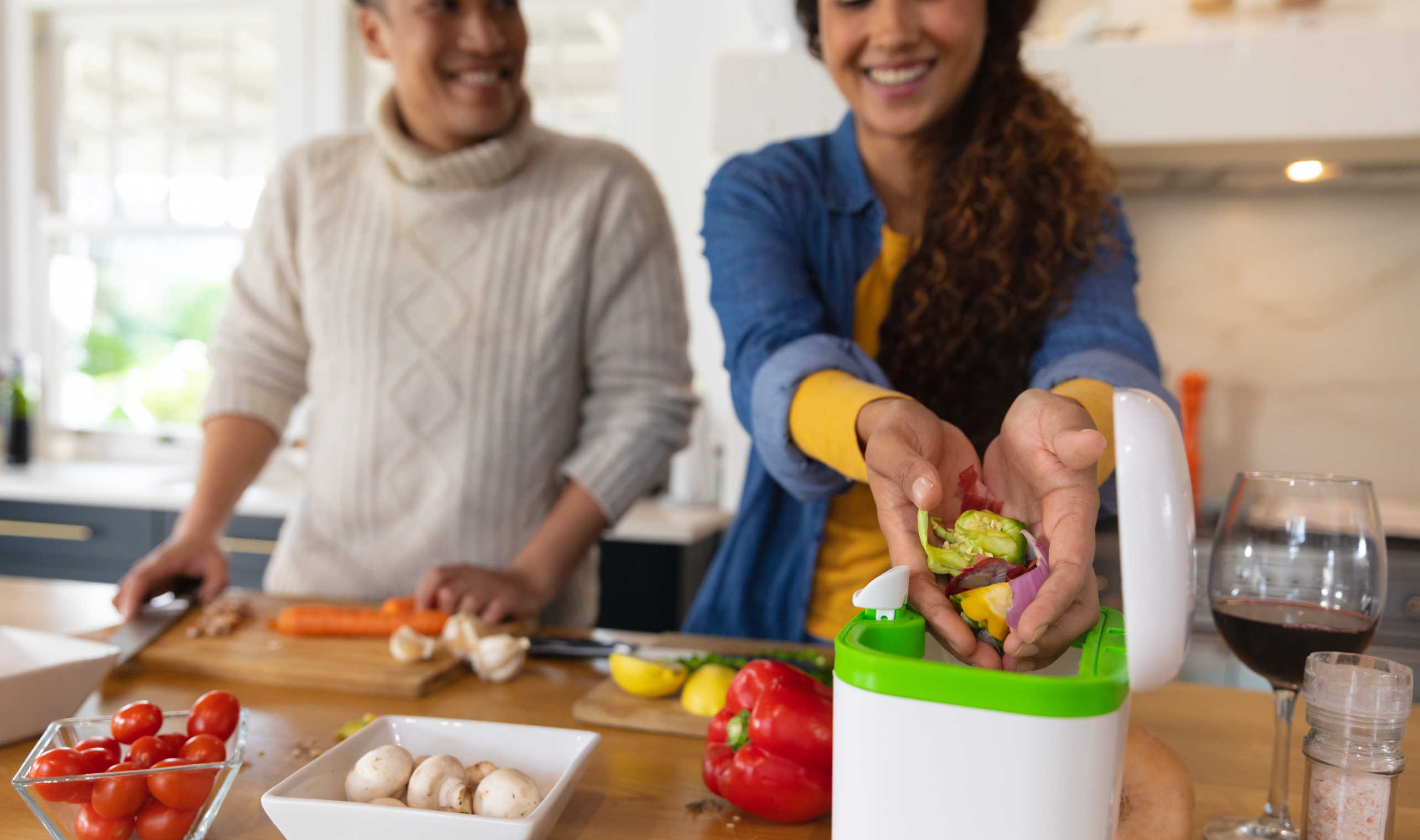Have you always been curious about composting, but not sure where to start? Lets make this the year you start putting those food scraps to work! We love to compost. And what’s not to love? Composting is satisfying, and it’s a powerful way to do your part for the climate. After all, with the EPA estimating that nearly 8% of greenhouse gases come from wasted food1, composting helps reduce your home food waste. It’s also good for soil and even conserves water2. Whether you live in the suburbs, a small town, or right in the heart of a big city, we’ll help you create healthy, usable compost in five easy steps.
Step One: Learn What to Compost
Compostable materials are categorized as either “green” or “brown.” Greens include nitrogen-rich food scraps, such as fruit peels and cores, veggie tops and bottoms, eggshells, coffee grounds, and cooked foods without oil, meat, or dairy. Browns include carbon-rich materials like newspaper, egg cartons, flowers, dried leaves, and pine needles. Healthy compost includes a mixture of both greens and browns to create the optimal conditions for those magical microorganisms who gradually turn all those scraps into compost.
Do NOT compost meat, fish, dairy, bones, oil, or butter.
Step Two: Choose an Indoor Storage Container
A good deal of your compost starts indoors as food scraps. While there are plenty of ceramic and metal compost bins on the market, in truth, something simple you already have around will get the job done. Re-purpose an old milk carton, yogurt container, re-sealable plastic bag, or even use a glass jar.
If you’re concerned about odors, or live in an apartment building with close neighbors, storing your compost in the freezer is a great option for reducing odors and the possibility of insects and fruit flies.
Expert Tip: Even though some products say “compostable,” such as certain bags and wipes, these are likely only compostable through an industrial facility.
Step Three: Decide What to Do with Your Compost
If you have a backyard, choose a dry and shady spot for your compost. You can either purchase a compost bin, build one yourself, or repurpose a household storage container. Try a wine crate, a dresser drawer, or even an old garbage bin. Whatever vessel you choose, consider something you can put a lid on. This will help retain heat and moisture as well as deter curious critters from making it their new favorite snack shack. If you have a larger yard, you might also choose to store your compost “naked,” although try to avoid putting it against a wall or it may stain the exposed surface.
If you don’t have a backyard, try taking your compost to a community garden or school, or connecting with restaurants or your local farmers’ market to see about places to donate your compost. In some areas, it’s even possible to get your compost picked up at home. Click here to search for compost pick up in your area. Or check with your city’s department of public works.
Step Four: Mix Your Compost
For healthy compost, you’ll need a blend of green and brown scraps. Too much green and your compost will be too wet. Too much brown and it may be too dry to fully decompose. While experienced composters may choose to experiment until they find the right “recipe,” an easy 1:1 ratio is a great place to start.
If you’re able to, try to layer your compost, starting with a layer of brown on the bottom followed by a layer of green. Alternating layers will help create the right combination of air and moisture that makes microorganisms happy.
Expert Tip: Top your mixture with a layer of browns to deter flies and minimize odors.
Step Five: Turn Frequently and Be Patient
To help your compost along, turn it periodically. Use a stick, shovel, or spade to create airflow and the right moisture level. Your compost should look moist, but not soggy. If it looks too wet, add more brown scraps. When your compost is young, stir it once a week. After it begins developing, stirring it once every few weeks should be sufficient.
In warmer weather, your compost could be ready in as little as 2-3 months, but in cooler weather, it will likely take closer to 6 months or even a year to fully break down.
How Do You Know When Compost is Ready?
Follow your nose! Compost that isn’t quite ready will smell a bit sour. Compost that’s ready to use will have a rich, earthy scent that’s even a little sweet.
When your compost looks and smells ready, spread that black gold all around to give your soil a boost, or use it in your potted plants. Then sit back and watch your garden grow.
1. https://www.epa.gov/system/files/documents/2021-11/from-farm-to-kitchen-the-environmental-impacts-of-u.s.-food-waste_508-tagged.pdf
2.https://www.npr.org/2020/04/07/828918397/how-to-compost-at-home


